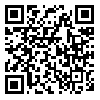Volume 28 - Supplementary
IBJ 2024, 28 - Supplementary: 257-257 |
Back to browse issues page
Download citation:
BibTeX | RIS | EndNote | Medlars | ProCite | Reference Manager | RefWorks
Send citation to:



BibTeX | RIS | EndNote | Medlars | ProCite | Reference Manager | RefWorks
Send citation to:
Fadaie Fini M, Ranjbar M, Shafaghat T. A Mapping of Facilitators and Barriers to Telehealth Consultations for Patients with Diabetes in the Post-COVID-19 Pandemic: A Scoping Review Study. IBJ 2024; 28 :257-257
URL: http://ibj.pasteur.ac.ir/article-1-4806-en.html
URL: http://ibj.pasteur.ac.ir/article-1-4806-en.html
Abstract:
Introduction: Telehealth provides health care services through information and communication technology instead of traditional face-to-face communication between patients and physicians. The COVID-19 pandemic has seen unprecedented innovations in health services around the world, including admissions consultation methods that have been remote. Telehealth visits limit exposure to COVID-19, reduce travel time and cost, and provide greater access to the health system, especially for underserved populations. It is also effective in managing chronic diseases and medication. While studies have proven the efficacy of telemedicine, several barriers, including costs, technical issues, concerns about privacy and security, and regulatory issues, limit the adoption of this technology. Therefore, considering the importance of the issues raised, this study was conducted to draw the facilitators and obstacles of telehealth for patients with diabetes during the COVID-19 pandemic.
Methods and Materials: The present study was a scoping review conducted in 2023 based on the integration of the frameworks presented by Arksey and O'Malley (2005) and Levac et al. (2010), considering the Joanna Briggs Institute guidelines (2015). These frameworks consisted of six steps. Four databases were searched after finalizing the search strategy, and the PRISMA-ScR was used to manage the retrieval and inclusion of the evidence. Microsoft Excel 2013 was used to extract the data. The summative analysis approach was used by applying MAXQDA10.
Results: According to the systematic search, 1,325 studies were retrieved after eliminating duplicates and unrelated articles, and 52 remained to extract telehealth facilitators and barriers. Four main aspects of attitude towards telehealth, attitudinal, process, structural, and communication factors, were summarized as telehealth facilitators. The barriers to telehealth were similarly summarized as attitudes toward telehealth and attitudinal, process, structural, and communication factors.
Conclusion and Discussion: Given the significance of telehealth in improving diabetes care and overall healthcare delivery, especially in the COVID-19 pandemic, identifying facilitators and barriers will provide valuable insights for healthcare providers, policymakers, and technology developers to address the challenges. Address and take advantage of the opportunities to support patients with diabetes and other chronic conditions.

Methods and Materials: The present study was a scoping review conducted in 2023 based on the integration of the frameworks presented by Arksey and O'Malley (2005) and Levac et al. (2010), considering the Joanna Briggs Institute guidelines (2015). These frameworks consisted of six steps. Four databases were searched after finalizing the search strategy, and the PRISMA-ScR was used to manage the retrieval and inclusion of the evidence. Microsoft Excel 2013 was used to extract the data. The summative analysis approach was used by applying MAXQDA10.
Results: According to the systematic search, 1,325 studies were retrieved after eliminating duplicates and unrelated articles, and 52 remained to extract telehealth facilitators and barriers. Four main aspects of attitude towards telehealth, attitudinal, process, structural, and communication factors, were summarized as telehealth facilitators. The barriers to telehealth were similarly summarized as attitudes toward telehealth and attitudinal, process, structural, and communication factors.
Conclusion and Discussion: Given the significance of telehealth in improving diabetes care and overall healthcare delivery, especially in the COVID-19 pandemic, identifying facilitators and barriers will provide valuable insights for healthcare providers, policymakers, and technology developers to address the challenges. Address and take advantage of the opportunities to support patients with diabetes and other chronic conditions.

| Rights and permissions | |
 |
This work is licensed under a Creative Commons Attribution-NonCommercial 4.0 International License. |







.png)
